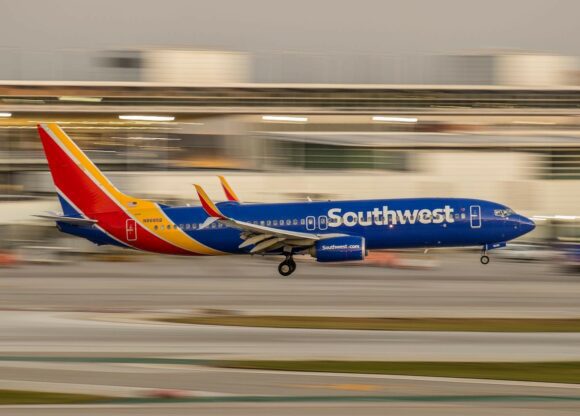
Thursday saw two more FY22 earnings releases from US airlines: JetBlue and Alaska Airlines. JetBlue reported a full-year net loss of $-362 million, while Alaska’s profit was a small $58 million. What’s behind these numbers? JetBlue and Alaska Airlines positive about 2023.
JetBlue
The $-362 million net loss compares to $-182 million in 2021. Revenues were much higher at $9.158 billion versus $6.037 billion, but so were expenses: $9.456 billion versus $6.117 billion. Fuel costs were up 116 percent to $3.1 billion, but JetBlue also spent 57 percent more on sales and marketing, or $289 million. The operating loss was $-298 million compared to $-80 million. The airline carried 39.6 million passengers, up from 30.1 in 2021, with its Mint premium cabin being very popular.
The fourth quarter saw a tiny $24 million net profit compared to $-129 million. Revenues were up to $2.415 billion from $1.834 billion, a record-high for any Q4. Fuel prices spiked a little less at 73 percent to $800 million. The operating was a positive $43 million, up from $-129 million. Storm Elliott in December and before that Hurricane Nicole had a limited impact on operations as JetBlue managed a Q4 completion factor of 98.2 percent.
JetBlue prefers to point out that it returned to profitability in HY2 and saw robust revenue growth, with the Northeast Alliance with American Airlines seeing continued growth thanks to attractive lower fares offered on more flights in New York and Boston. NEA capacity by far outpaced domestic growth, said Chief Operating Officer Joanna Geraghty, but the airline will build capacity in other regions too. JetBlue Travel Products performed very well and generated over $100 million in revenues and is showing good growth potential in 2023.
While costs per available seat mile (CASM) were up 28.4 percent in Q4 over 2019, JetBlue says it is making good progress on its cost reduction initiatives. It is on track to deliver $150-$200 million in structural cost reductions in 2024, of which $70 million in 2023. An additional $75 million in savings comes from the phasing out of the Embraer E190 to the Airbus A220, of which $40 million through this year. The airline is also improving its productivity thanks to better utilization, optimized maintenance, and staffing, but it has learned from staff shortages and its ‘operational reset’ last spring that it needs to maintain a more conservative approach to operational planning. Chief Financial Officer Ursula Hurley noted that extra attention is given to labor costs in high-cost areas in the Northeast.
JetBlue ended the year with $1.6 billion in unrestricted cash and expects to maintain a $1.6 to $2.0 billion level this year. This excludes access to a $600 million revolving credit facility. The carrier intends to finance a portion of its new aircraft deliveries – including four Airbus A321LRs and fifteen A220-300s – rather to pay cash to maintain a healthy liquidity balance. The -LRs will see service from this summer to Paris Charles de Gaulle, its third European airport after London Heathrow and London Gatwick.
In its outlook for 2023, JetBlue expects to increase capacity for Q1 and the full year by between 5.5 and 8.5 percent from restoring aircraft utilization. As demand remains strong, revenues should be up 28 to 32 percent in Q1 and in the high single-digits or low double-digits for the full year, which should see it return to an adjusted profit in all quarters. This guidance includes the effects of the new tentative labor agreement with pilot union ALPA, which is worth one percentage point in CASM ex-fuel in Q3 and three points for the full year. The new agreement should keep JetBlue attractive for pilots now and after the proposed acquisition of Spirit Airlines.

Alaska Airlines
Alaska Airlines Group said it is happy with how 2022 panned out, running one of the best operations despite challenges and confirming the trend of recovery and stability. However, the $58 million full-year profit reflects pale against the $478 million profit in 2021 despite revenues that were 56 percent higher to $9.646 billion from $6.176 billion.
Like most airlines, Alaska suffered from higher operational expenses, in this case, $9.576 billion compared to $5.491 billion in the previous year. Aircraft fuel was up 109 percent to $2.7 billion, but variable incentive payments and selling costs were also up. They pushed the operating profit down to $70 million.
Q4 produced a $22 million net profit versus $18 million in 2021, with revenues at $2.479 billion (2021: $1.899 billion), expenses at $2.456 billion ($1.860 billion), and an operating profit of $23 million versus $39 million.
Alaska has retired now all its Airbus A320ceo’s as announced earlier, as well as its De Havilland Canada Dash 8-400s. By the end of the year, the ten remaining A320neo’s will also have left the fleet. It took delivery of four Boeing MAX 9s in Q4, bringing the fleet to 37. As reported in October, the carrier ordered ten MAX 9s and 42 MAX 10s for delivery between 2024 and 2027 and has 105 incremental delivery positions for the MAX between 2026 and 2030. The regional fleet of Horizon Air grew to 33 Embraer E175s thanks to the delivery of three more aircraft in Q4.
Alaska Airlines ended the year with $2.4 billion in unrestricted cash and marketable securities and $1.5 billion in net debt. It repaid $385 million of debt. In 2023, the group intends to resume share repurchases of between $75 and $100 million.
In its outlook, Alaska expects capacity to grow in Q1 by eleven to fourteen percent and between eight and ten percent for the full year. Q1 revenues should be up between 29 and 32 percent or eight to ten percent for the year. CASM ex-fuel is expected to be down by zero to two percent for the first quarter and by one to three percent for the full year.
Active as a journalist since 1987, with a background in newspapers, magazines, and a regional news station, Richard has been covering commercial aviation on a freelance basis since late 2016.
Richard is contributing to AirInsight since December 2018. He also writes for Airliner World, Aviation News, Piloot & Vliegtuig, and Luchtvaartnieuws Magazine. Twitter: @rschuur_aero.





